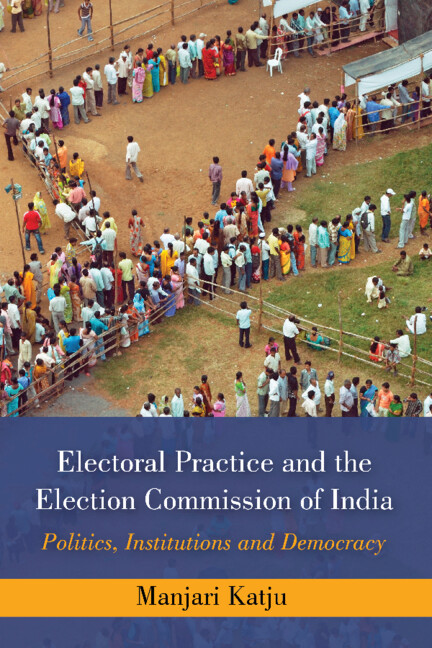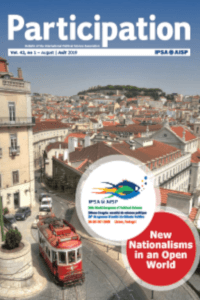Electoral Practice and the Election Commission of India: Politics, Institutions and Democracy
By : Manjari Katju
Release date: Jun 2023
Cambridge University Press
Number of pages: 250
ISBN: 978-1-009-34686-3


The book is about electoral practice in India and the role of the Election Commission of India (henceforth, the EC) in operating the colossal electoral machinery. The book covers a time period between 1990 (the year just before the 10th parliamentary elections of 1991) and 2019 (the year of the 17th parliamentary election). It attempts to analyze the EC’s interactions with the Indian Parliament, Supreme Court (which, like the EC are constitutional institutions in India), political parties and civil society, to streamline democratic procedures. Through its various chapters, the book primarily puts forth the argument that besides the citizen-voter, political parties and civil society among others, the EC plays a crucial role in steering democracy through its work of supervising and conducting elections in India. In other words, through its regulatory role, the EC attempts to take the process of democratization forward. The book also attempts a comparison between some important electoral procedures in India and a few other liberal democracies (the US, UK, and South Africa, among others) to highlight the role electoral institutions play in democratization.
The book is located in the realm of institutional studies or neo-institutionalism. Specifically, it comes within ‘normative institutionalism’ that foregrounds the need to look afresh at the relationship between formal institutions and political behaviour as it contends that institutional design plays a crucial role in shaping political preferences. Institutions ‘behave’ in certain ways, influence politics and their decisions have long-term implications for political culture.
In this theoretical frame, this work on the EC, highlights that institutions are repositories of political experience, conventions and power play, and they not only influence but constitute individual/group behaviour in significant ways. It views state institutions, or formal institutions of governing, as political actors that are constructs of history but also affect the flow of history. The layering of diverse experiences in them and their collective nature gives them a binding force that impacts political praxis.
The book argues that by giving the EC the responsibility of conducting elections, the makers of the Constitution of India tried to ensure equality of participation and a deeper involvement of people in steering their country. The EC, in this role, has tried to mobilize voters towards greater participation; it advances the values of ‘citizen involvement’, ‘political choice’, ‘procedural compliance’ and ‘rule conformity’ by way of conducting free and fair elections.
The EC’s work, over the years, has considerably expanded. Elections in India have become an all-year phenomena happening all year round and handled by the EC, whether by parliamentary, presidential, state legislatures or by polls. This keeps the EC occupied for most times of the year. The expansion in politicisation of Indian society has raised the number of contestants and voters, which has added to the work. In this ever-increasing competitive political arena, safeguarding democracy and maintaining rule of law is a serious responsibility which establishes or breaks trust in the EC. This book has been written at a time when India’s experiment with democratic praxis has been viewed as largely successful but carrying with it some worrisome trends like attacks on minority rights, caste violence, continued oppression of women, and curbs on freedom of speech and expression often in the name of ‘nationalism’. Instances of violence on and erosion of rights of minorities particularly is a serious concern. In this scenario, the EC’s autonomy in the face of governmental controls has also come under the scanner. Within this broad canvas drawing out voters, conducting a safe election, handling election violence, reducing ruling party/parties’ excesses, and curbing money and muscle power are EC’s tasks that are focused upon by the book to understand the procedural/institutional side of Indian democracy.











